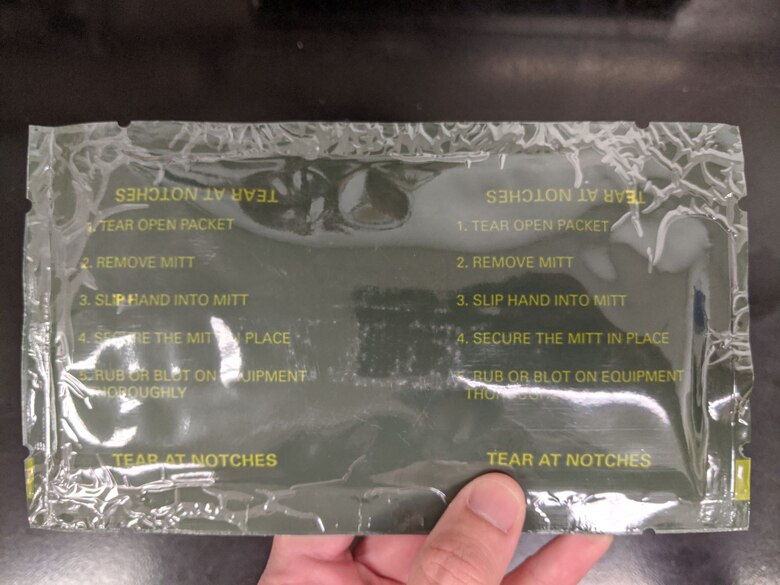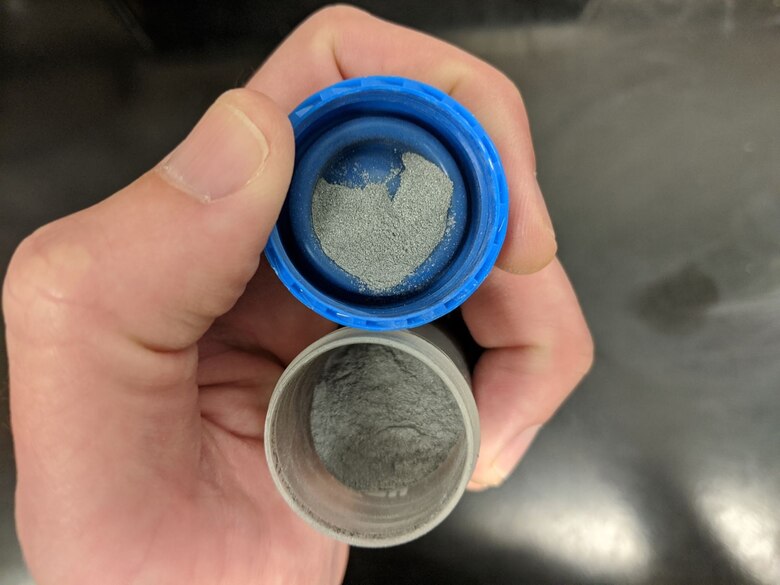The Air Force Civil Engineer's Readiness Lab recently determined more than 75,000 expired M295 decontamination kits used in chemical defense ensembles are still effective and can be used, saving the Air Force more than $2.3 million over a four-year period.
The M295 kit is a packet that contains an activated carbon and alumina-silicate powder inside of a hook and loop-cinched mitt that soaks up chemical contamination like a sponge.
Each year, the Air Force removes expired kits from field use. In the calendar year 2020 alone, 167,000 kits valued at $4.8 million will reach the end of their five-year shelf life. Before the civil engineer lab study, a large number of expired kits sat unused in stockrooms spread across the globe.
In 2018, AFCEC's Readiness Directorate's Emergency Management Division wanted to find out if the expiration date on them could be extended. The civil engineer laboratory at Tyndall AFB launched a two-year study that determined the performance of the kits had not degraded and were safe to use, said Bruce Salter, lead contract researcher for the M295 study.
Before the study, the Air Force was faced with spending $15.3 million to purchase 496,000 new kits to replenish the stock needed for operational use and to meet Air Force training goals. The CE lab findings not only negated the potential $15.3 million purchase, completing the study in house saved even more taxpayer dollars, Salter said.
"The tests would've cost roughly $250,000 if they were sent to an outside lab. We completed the study for $75,000," he said.
The extended date opens the door for the Air Force to not only save money on their own kits but also acquire expired M295 kits from other services that have moved to the Joint Service Equipment Wipe in place of the M295, said Dr. Jeff Owens, lead researcher for chemical and biological warfare defense for the lab.
"The CE lab is responsive to the needs of our customers - the CE enterprise," Owens said. "Whether we're working on ways to improve air quality in expeditionary shelters or extending the shelf life of a lifesaving kit, we enable civil engineers worldwide to execute their missions safely, efficiently and more cost-effectively."

Air Force Reserve Staff Sgt. Casey Godwin, aircrew flight equipment specialist, 327th Operations Support Squadron, pats down Staff Sgt. Michael Hopson, loadmaster, 327th Airlift Squadron, with activated charcoal from an M295 Individual Decontamination Kit during a training scenario. The Air Force Civil Engineer's Readiness Lab recently determined more than 75,000 expired M295 decontamination kits used in chemical defense ensembles are still effective and can be used, saving the Air Force more than $2.3 million over a four-year period. (U.S. Air Force photo by Master Sgt. Jeff Walston)

Approximately 76,875 kits have been removed from factory cardboard boxes and are now eligible for use resulting in a cost avoidance of $2.3 million over the next four years. The JSLIST shelf-life extension, which is currently projected to last until 2024, led to an additional $4.76 million cost avoidance for the Air Force. (U.S. Air Force photo by Bruce Salter)

After removing from a M295 Decontamination Kit, this carbon/alumina-silicate powder is applied with a mitt to equipment as well as uniforms when Airmen are hit with a chemical agent in the field. The resin then puffs up when rubbed or blotted, then removed from the surface to which it made contact. (U.S. Air Force photo by Bruce Salter)






